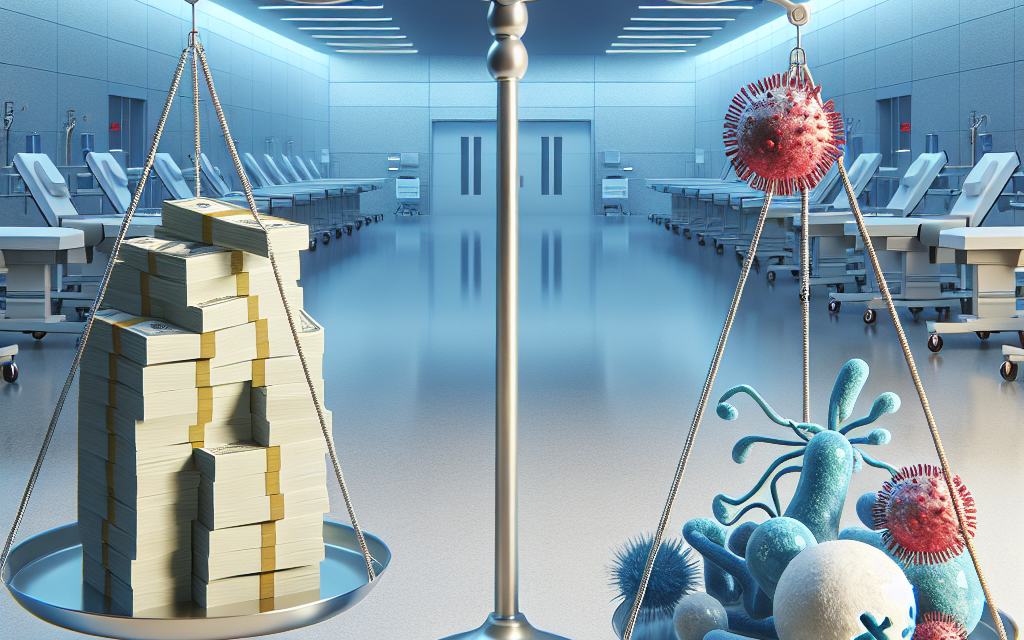The Price of Neglect: Preventing Contamination Risks in Healthcare Facilities
Healthcare facilities are critical environments where the stakes are incredibly high. The health and safety of patients, staff, and visitors depend on the rigorous management of contamination risks. Neglecting these risks can lead to dire consequences, including healthcare-associated infections (HAIs), increased healthcare costs, and even loss of life. This article delves into the various aspects of contamination risks in healthcare settings, exploring their causes, consequences, and preventive measures.
Understanding Contamination Risks in Healthcare
Contamination risks in healthcare facilities arise from various sources, including biological, chemical, and physical contaminants. Understanding these risks is the first step toward effective prevention.
Types of Contaminants
Healthcare facilities face a multitude of contaminants that can compromise patient safety. These include:
- Biological Contaminants: Bacteria, viruses, fungi, and parasites that can cause infections.
- Chemical Contaminants: Hazardous substances such as disinfectants, anesthetics, and pharmaceuticals that can pose health risks.
- Physical Contaminants: Particulate matter, dust, and other physical agents that can affect air quality and patient health.
Each type of contaminant presents unique challenges and requires tailored strategies for management and prevention.
Sources of Contamination
Contamination can originate from various sources within healthcare facilities:
- Healthcare Workers: Staff can inadvertently introduce pathogens through improper hand hygiene or inadequate use of personal protective equipment (PPE).
- Medical Equipment: Devices that are not properly sterilized can serve as reservoirs for pathogens.
- Environmental Surfaces: High-touch areas such as doorknobs, light switches, and bed rails can harbor infectious agents.
Understanding these sources is crucial for developing effective infection control protocols.
Statistics on Contamination Risks
The impact of contamination risks is significant. According to the Centers for Disease Control and Prevention (CDC), approximately 1 in 31 hospital patients has at least one healthcare-associated infection on any given day. This statistic underscores the urgency of addressing contamination risks in healthcare settings.
The Consequences of Neglecting Contamination Risks
Neglecting contamination risks can have severe consequences for patients, healthcare providers, and the healthcare system as a whole.
Healthcare-Associated Infections (HAIs)
HAIs are one of the most significant consequences of contamination risks. These infections can lead to prolonged hospital stays, increased medical costs, and higher mortality rates. For instance, a study published in the Journal of the American Medical Association found that HAIs contribute to approximately 99,000 deaths annually in the United States alone.
Financial Implications
The financial burden of HAIs is staggering. The CDC estimates that HAIs cost the U.S. healthcare system between $28 billion and $45 billion each year. This figure includes direct medical costs, lost productivity, and additional treatment expenses.
Impact on Patient Trust
Neglecting contamination risks can erode patient trust in healthcare facilities. Patients expect a safe environment when seeking medical care, and any lapses in infection control can lead to a loss of confidence. This can result in patients avoiding necessary medical treatments, ultimately affecting their health outcomes.
Preventive Measures for Contamination Risks
Preventing contamination risks requires a multifaceted approach that includes education, policy implementation, and continuous monitoring.
Education and Training
One of the most effective ways to prevent contamination is through education and training of healthcare workers. Regular training sessions on infection control practices, proper hand hygiene, and the use of PPE can significantly reduce the risk of contamination. For example, a study published in the American Journal of Infection Control found that implementing a comprehensive training program for staff led to a 30% reduction in HAIs.
Infection Control Policies
Healthcare facilities must establish and enforce strict infection control policies. These policies should include:
- Regular cleaning and disinfection protocols for all surfaces and equipment.
- Guidelines for the proper use and disposal of PPE.
- Protocols for isolating patients with known infections to prevent cross-contamination.
By having clear policies in place, healthcare facilities can create a culture of safety and accountability.
Monitoring and Surveillance
Continuous monitoring and surveillance are essential for identifying contamination risks and evaluating the effectiveness of infection control measures. Facilities should implement regular audits and assessments to ensure compliance with established protocols. For instance, the use of environmental monitoring systems can help identify areas with high levels of contamination, allowing for targeted interventions.
Case Studies: Successful Prevention Strategies
Examining successful case studies can provide valuable insights into effective prevention strategies for contamination risks in healthcare facilities.
Case Study 1: The VA Hospital System
The Veterans Affairs (VA) hospital system implemented a comprehensive infection control program that included standardized protocols for hand hygiene, environmental cleaning, and the use of PPE. As a result, the VA reported a 70% reduction in central line-associated bloodstream infections (CLABSIs) over a five-year period. This success highlights the importance of a systematic approach to infection control.
Case Study 2: The Cleveland Clinic
The Cleveland Clinic adopted a multi-faceted approach to reduce surgical site infections (SSIs). This included preoperative screening for nasal carriers of Staphylococcus aureus, the use of antiseptic nasal ointments, and strict adherence to surgical protocols. The clinic reported a 50% reduction in SSIs, demonstrating the effectiveness of targeted interventions.
The Role of Technology in Contamination Prevention
Advancements in technology are playing an increasingly important role in preventing contamination risks in healthcare facilities.
Automated Cleaning Systems
Automated cleaning systems, such as ultraviolet (UV) light disinfection, have shown promise in reducing contamination. These systems can effectively eliminate pathogens on surfaces that are often missed during manual cleaning. A study published in the Journal of Hospital Infection found that UV disinfection reduced the rate of HAIs by 30% in a hospital setting.
Electronic Health Records (EHRs)
EHRs can enhance infection control by providing real-time data on infection rates and trends. This information allows healthcare facilities to identify outbreaks quickly and implement targeted interventions. For example, a hospital that utilized EHR data to track infection rates was able to reduce its HAI rates by 25% within a year.
Wearable Technology
Wearable technology can also contribute to infection prevention by monitoring healthcare workers’ hand hygiene compliance. Devices that track handwashing frequency and provide feedback can encourage staff to adhere to infection control protocols. A pilot study found that implementing wearable technology increased hand hygiene compliance by 40% among healthcare workers.
Conclusion: The Imperative of Action
The price of neglecting contamination risks in healthcare facilities is far too high. From the devastating impact of HAIs on patient health to the financial burden on the healthcare system, the consequences are profound. However, by understanding the sources of contamination, implementing effective preventive measures, and leveraging technology, healthcare facilities can significantly reduce these risks.
As we move forward, it is imperative that healthcare organizations prioritize infection control and create a culture of safety. Continuous education, strict adherence to policies, and the integration of innovative technologies will be key to safeguarding the health of patients and staff alike. The time to act is now—because in healthcare, every moment counts.





